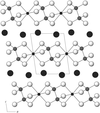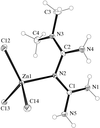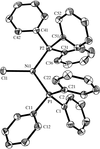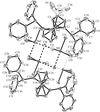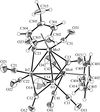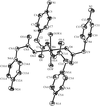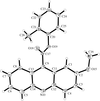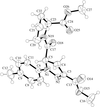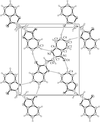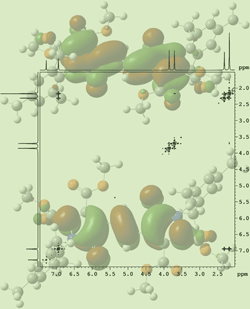issue contents
March 2002 issue
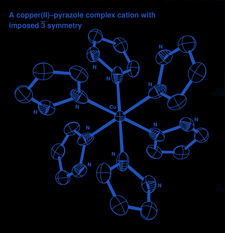
Cover illustration: The cation of hexakis(pyrazole-![[kappa]](/logos/entities/kappa_rmgif.gif) N2)copper(II) bis(hexafluoroarsenate). Displacement ellipsoids are plotted at the 50% probability level and H atoms have been omitted for clarity. See Otieno, Blanton, Hatfield, Asher & Parkin [Acta Cryst. (2002), C58, m182-m185].
N2)copper(II) bis(hexafluoroarsenate). Displacement ellipsoids are plotted at the 50% probability level and H atoms have been omitted for clarity. See Otieno, Blanton, Hatfield, Asher & Parkin [Acta Cryst. (2002), C58, m182-m185].
inorganic compounds
Download citation


Download citation


Rubidium manganese hexathiodiphosphate, Rb2MnP2S6, crystallizes in a structure typical of compounds of the type A2MP2Q6 (A = K, Rb, Cs; M = Mn, Fe; Q = S, Se). Its structure can be viewed as columns of [MnP2S6]2− polyhedra parallel to the a axis, interconnected by Rb+.
Download citation


Download citation


The structure of the low-temperature form of barium tetraphosphate shows the tetraphosphate to exist in an S conformation.
Download citation


Download citation


The tetragonal polymorph of caesium hydroxide monohydrate, CsOH·H2O (or CsH3O2), a clathrate hydrate, contains an infinite three-dimensional hydrogen-bonded oxygen framework that is locally identical to layers found in the hexagonal modification.
Download citation


Download citation


SrMn(SeO3)2 is built up from sheets of irregular MnO5+1 units and pyramidal SeO3 groups, sharing vertices and edges. Nine-coordinate Sr2+ cations complete the structure.
Download citation


Download citation


The structure of HgWO4 consists of zigzag chains of edge-sharing WO6 octahedra running along the c axis and layers of corner-sharing HgO6 octahedra in the bc plane.
Download citation


Download citation


The crystal structure of Hg3AlF6O2H has been determined at room temperature. It comprises [HgO2F6] polyhedra and [AlF6] octahedra. Assumed hydrogen bonding between two O atoms, with O⋯O = 2.562 (9) Å, provides additional bonds in the framework.
Download citation


Download citation


The structure of a new variant orthorhombic Rb3Ta5O14 phase with Pnma symmetry was identified from a half sphere of synchrotron X-ray data measured at a wavelength of 0.85 Å.
metal-organic compounds
Download citation


Download citation


Download citation


Download citation


Download citation


Download citation


Download citation


Download citation


Download citation


Download citation


Download citation


Download citation


Download citation


Download citation


Download citation


Download citation


Download citation


Download citation


Download citation


Download citation


Download citation


Download citation


Download citation


Download citation


Download citation


Download citation


Download citation


Download citation


Download citation


Download citation


Download citation


Download citation


Download citation


Download citation


Download citation


Download citation


Download citation


Download citation


Download citation


Download citation


Download citation


Download citation


Download citation


Download citation


organic compounds
Download citation


Download citation


Download citation


Download citation


Download citation


Download citation


Download citation


Download citation


Download citation


Download citation


Download citation


Download citation


Download citation


Download citation


Download citation


Download citation


Download citation


Download citation


Download citation


Download citation


Download citation


Download citation


Download citation


Download citation


Download citation


Download citation


Download citation


Download citation


Download citation


Download citation


Download citation


Download citation


Download citation


Download citation


Download citation


Download citation


Download citation


Download citation


Download citation


Download citation


Download citation


Download citation


Download citation


Download citation


Download citation


Download citation


Download citation


Download citation


Download citation


Download citation


Download citation


Download citation


Download citation


Download citation




 journal menu
journal menu











